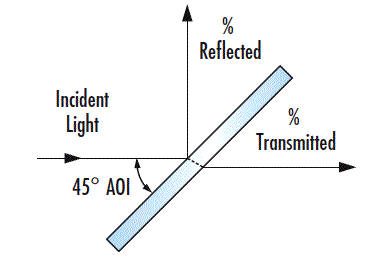
 TECHSPEC® components are designed, specified, or manufactured by Edmund Optics. Learn More
TECHSPEC® components are designed, specified, or manufactured by Edmund Optics. Learn More
| Volume Pricing | |
|---|---|
| Qty 1+ | €512,94 each |
| Need More? | Request Quote |
TECHSPEC® Visible and NIR Plate Beamsplitters are ideal for dual magnification imaging systems and for combining low power laser beams. These beamsplitters offer the optimum combination of polished, high-quality optical-grade glass with minimum substrate thickness. The broadband dielectric coatings provide maximum throughput, are ideal for minimizing ghost images, and have much less energy loss than metallic coatings. TECHSPEC® Visible and NIR Plate Beamsplitters are coated on their back surfaces with a multi-layer anti-reflection (AR) coating, reducing back reflections to less than 1.0% for each wavelength range. Note that for easy identification, the coated side of the beamsplitter is marked with a black dot.

or view regional numbers
QUOTE TOOL
enter stock numbers to begin
Copyright 2025 | Edmund Optics BV, De Maas 22B, 5684 PL Best, The Netherlands
California Consumer Privacy Acts (CCPA): Do Not Sell or Share My Personal Information
California Transparency in Supply Chains Act
The FUTURE Depends On Optics®